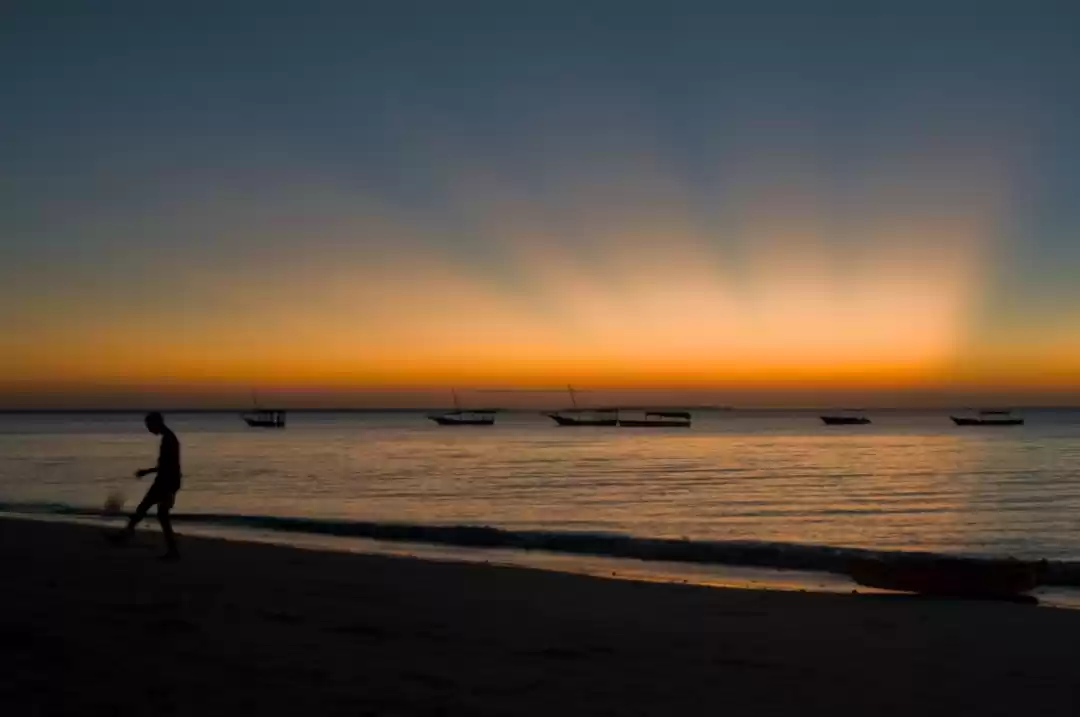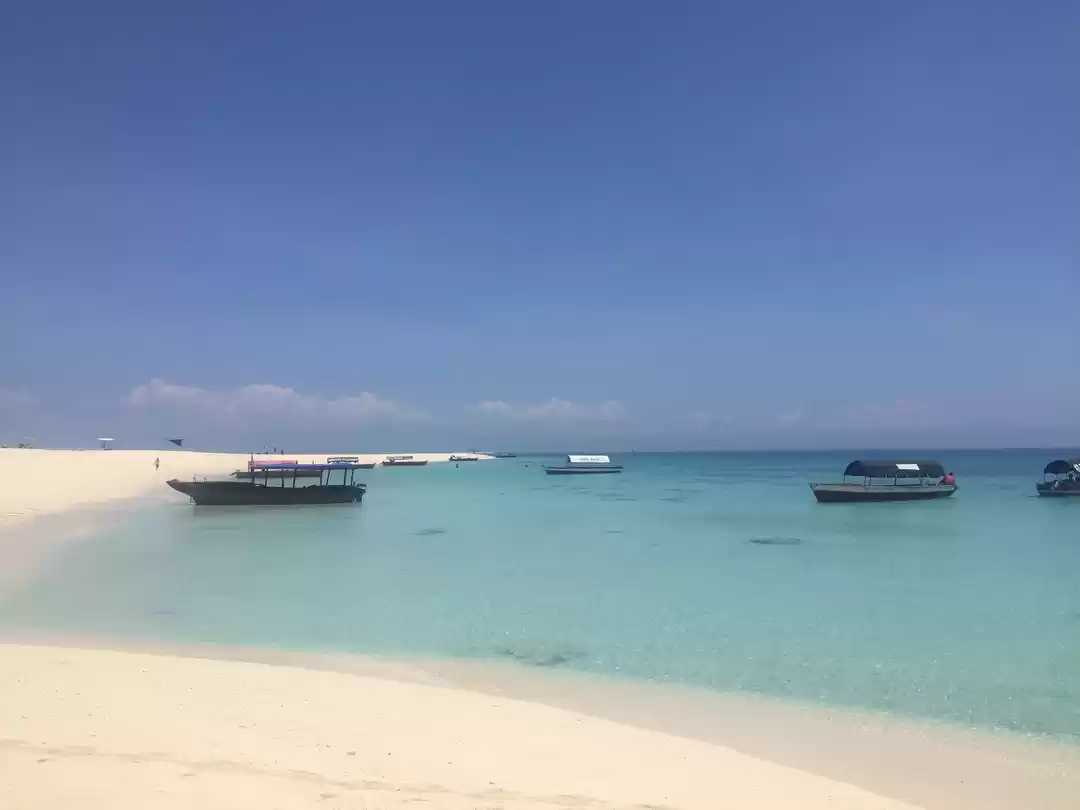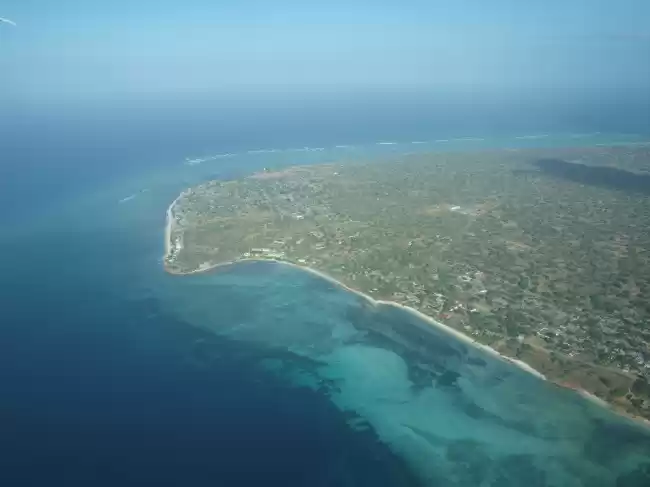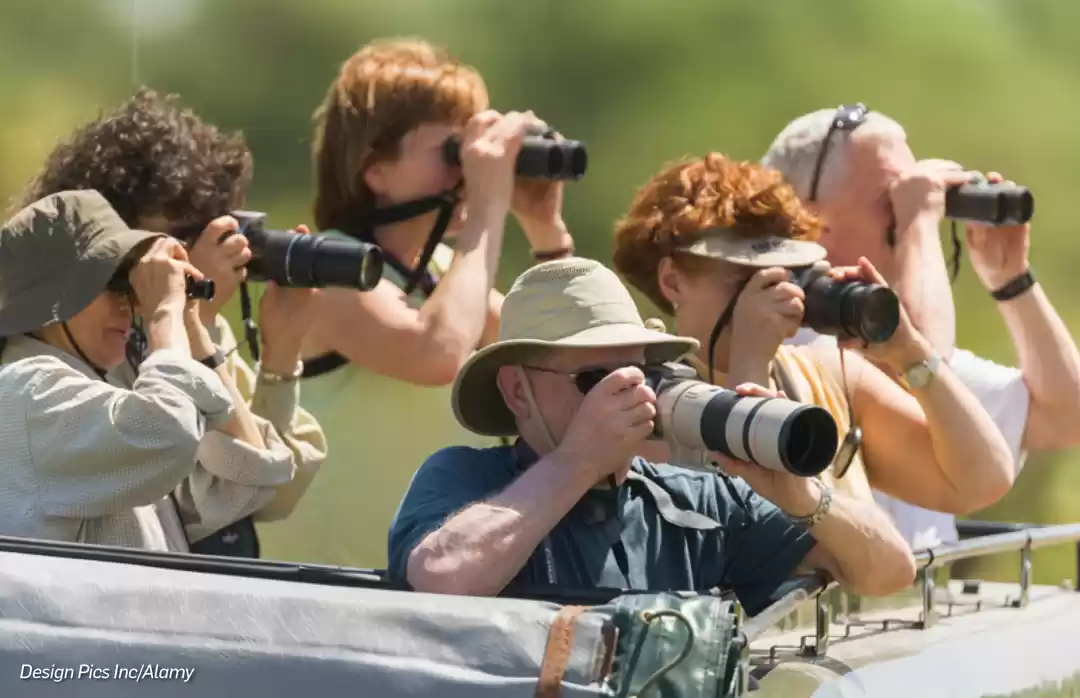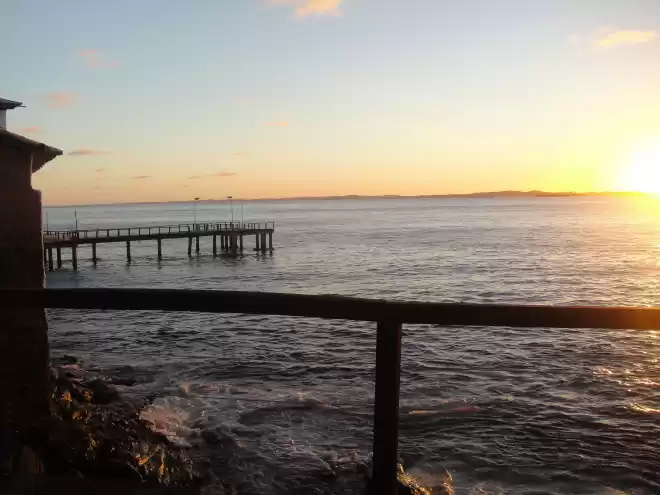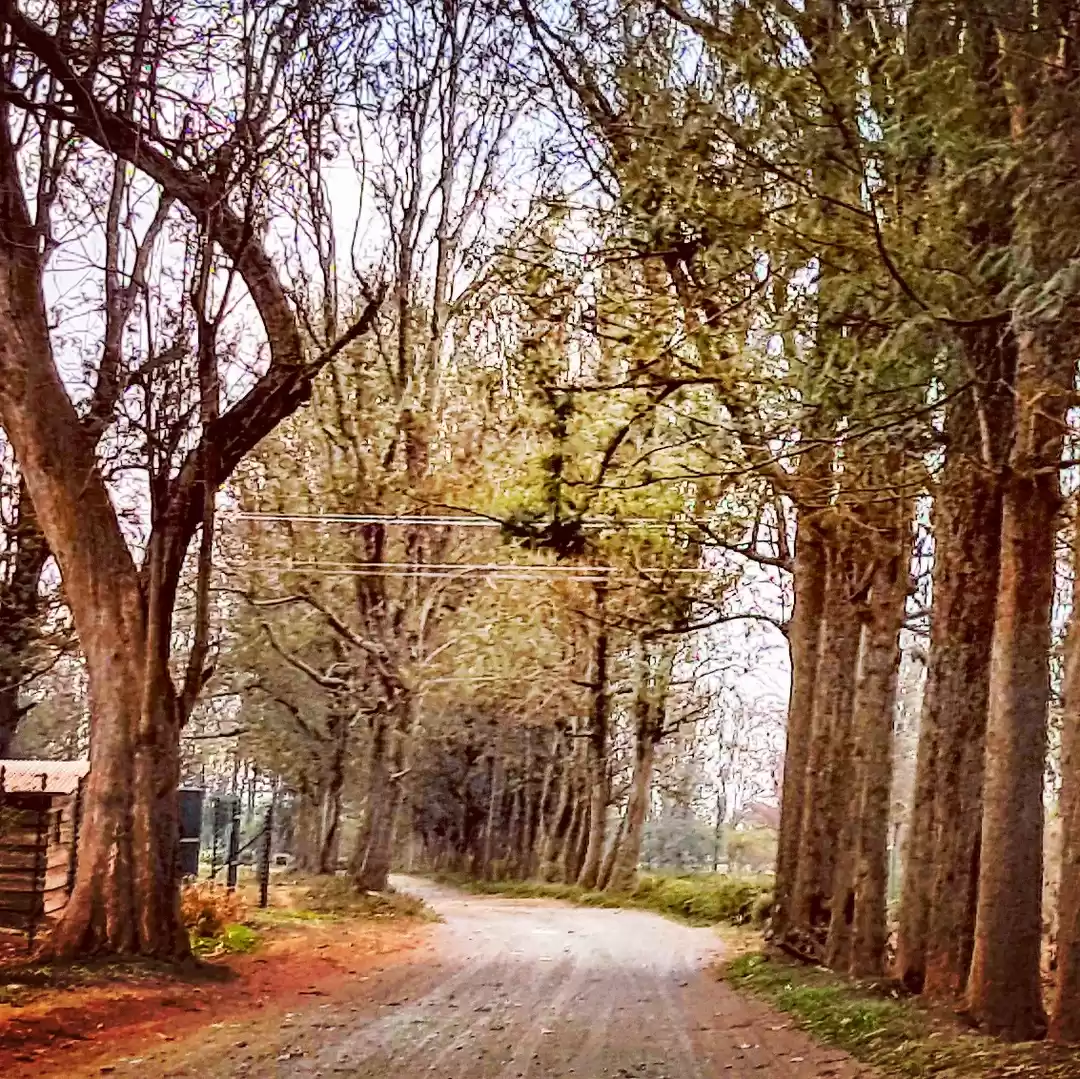Fierce Omani traders, mysterious 19th century explorers, scarves with hidden messages, markets at sunset with Indians, Arabs, and Masai milling them; ornate wooden doors, narrow maze-like alleys that give you sudden glimpses of a turquoise ocean… Ruchira Bose discovers a vivid past and present in Zanzibar.

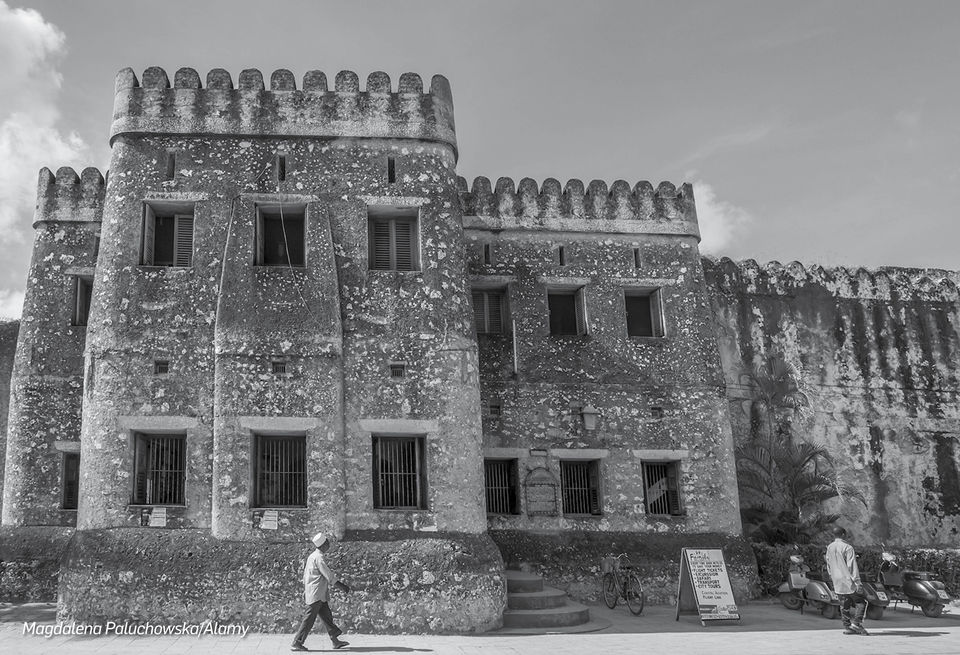
As the Airbus A320 crosses over Pemba Island
Below, I start to see languorously long dhows with billowy ivory sails treading cobalt blue waters. The Indian ocean here is gorgeous. Inky blues fade to turquoise and eventually pale away as they reach the white sand shores of the islands. The islands are white or golden ringed emerald dots dense with spice and coconut plantations.
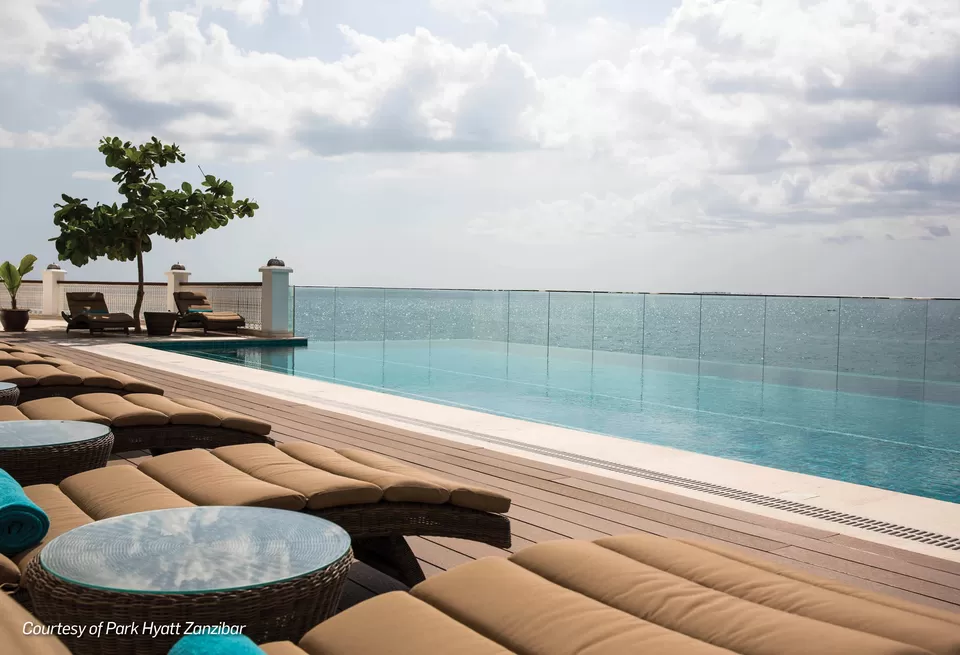
The colours are so intense, that it feels like I’ve gate crashed an Irma Stern painting. Coming to the archipelago of Zanzibar is like awakening to a beautifully different side of Africa. It’s a destination laced with a rich, spicy history, set within a vivid ocean and landscape, and promising a new stylish take on imperial heritage. Before I came here, all I knew of Zanzibar was from descriptions I had read in letters and journals written by ancient explorers, and blog posts from modern travellers.
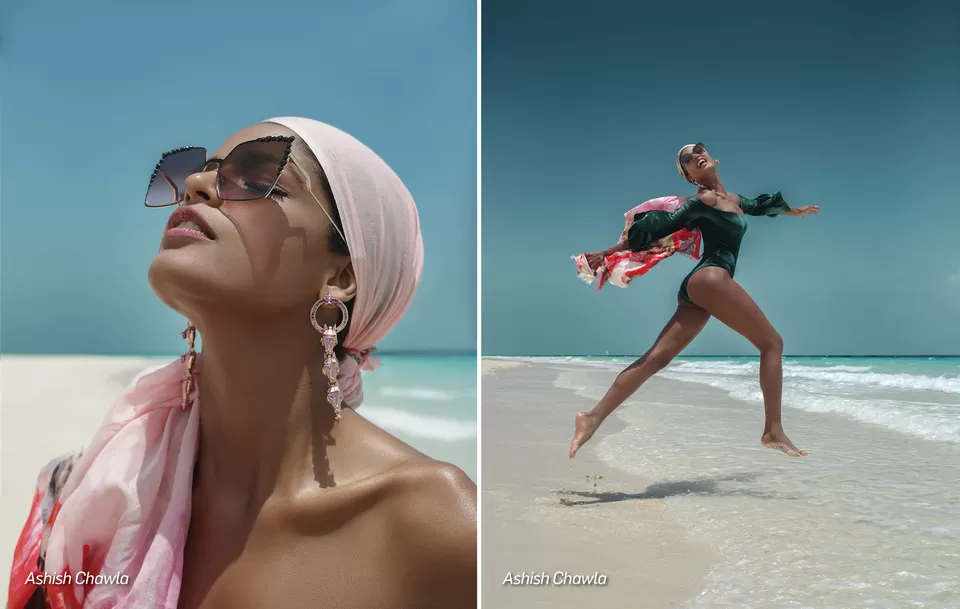
Frankly, the blog posts were not very inspiring. The letters, on the other hand, spoke of dramatic times of slave and spice trade, a golden age of exploration, adventure, political intrigue, unique cultural practices, and a fascinating melding of Arab and African lifestyle. In 1866, the British missionary and explorer, Dr David Livingstone went in search of the answer to an age-old geographical riddle: where was the source of the Nile?
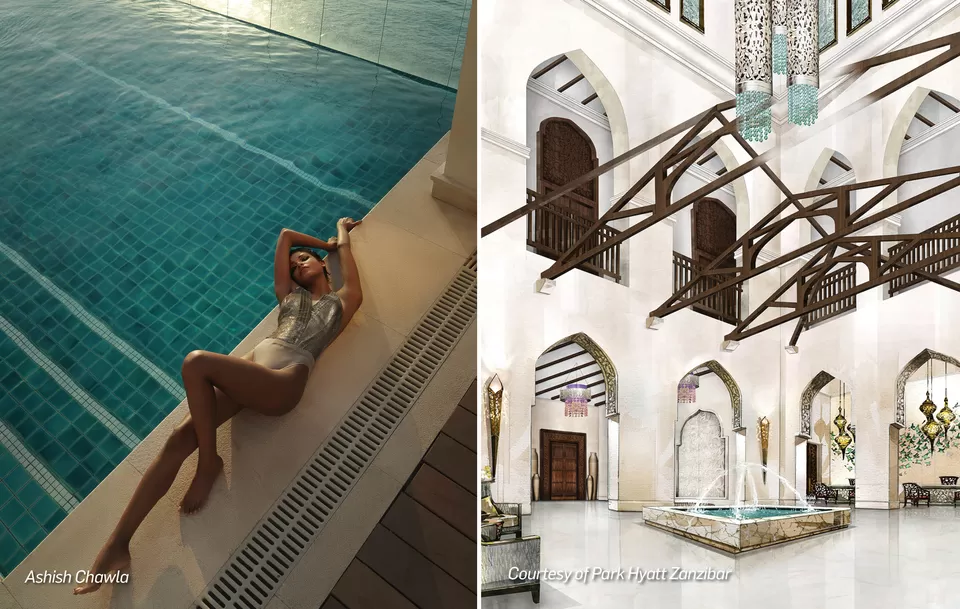
Livingstone believed the answer will give him leverage over slave traders and help him put an end to the Arab-East African human trafficking business. Livingstone set out to the wild, un-mapped and nearly impenetrable interiors of East Africa in this quest. But within the first few weeks, his expedition fell apart and his entourage abandoned him. Livingstone seemed lost in the region, till two years later when a journalist, Henry Stanley was commissioned by an American paper to go in search of the explorer.
Stanley diligently combed East Africa, filing reports that captivated the readers of New York Herald for months, and finally found Dr Livingstone on the shores of Lake Tanganyika. There’s a sketch of this meeting where Stanley is believed to have reached out to the missionary and uttered the famous line, “Dr Livingstone, I presume?” The book Into Africa by Martin Dugard chronicles Livingstone and Stanley’s journey in alternating chapters.
The historic meeting of the two lead to another dramatic turn. Dr Livingstone gave Stanely and his paper, a detailed and graphic account of a massacre of slaves in the village of Nyangwe. This series of stories in the New York Herald brought the western world’s attention to the human trafficking business and lead to the British putting an end to the Arab-East Africa slave trade hub in Zanzibar.
In later years, some researchers say Dr Livingstone and his men were not entirely innocent witnesses of the slave trade but played some part. Zanzibar’s story is peppered with such intrigue. Tippu Tip, the immaculately groomed, polite, speaker of perfect Arab, and helpful to Europeans in distress, was also the most powerful of the Arab traders of slaves and ivory in East Africa during the second half of the 19th century. He and his minions—Arabs and Swahilis aided by thousands of central African men absorbed into the trade as slaves or freed slaves— stuck terror into the hearts of chiefs and villagers, compelling them to hand over tusks and slaves in exchange for their lives.
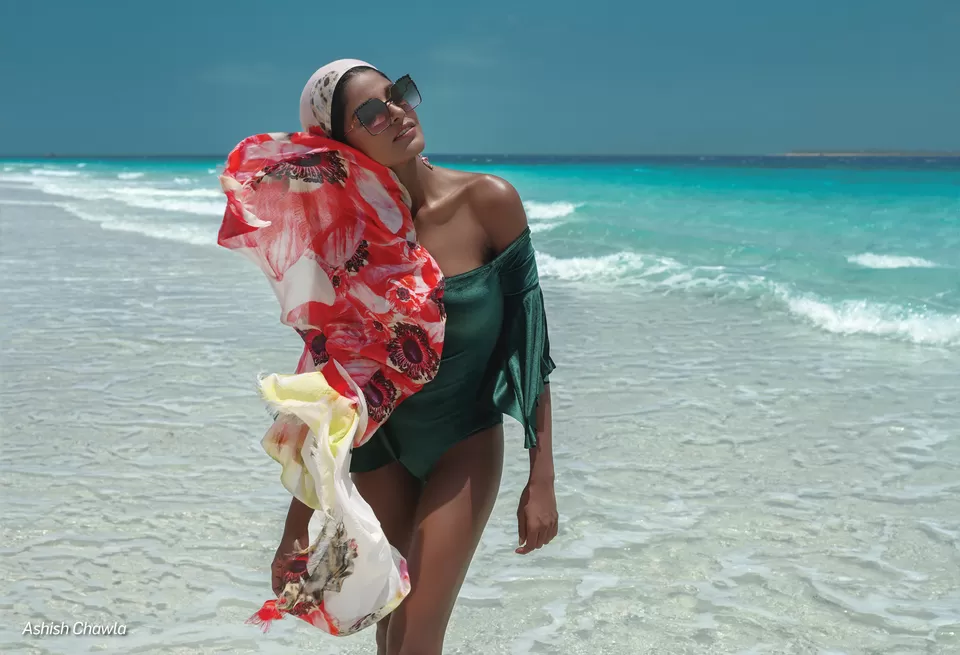
Tippu Tip’s house today in Zanzibar’s Stone Town is a preserved heritage site, a reminder of its more colourful but cruel times. But not all of Zanzibar’s past is marred by slave trade. Take a walk through Stone Town just before sunrise and you see light slowly fill narrow white-washed alleys, ornate wooden doors that feature not only chains that are symbolic of slave trade but also plant motifs inspired by Zanzibar’s ‘spice island’ moniker.
At sunset, at Forodhani Park on the waterfront, a night market pops up, where you can watch cooks swiftly grilling meats, octopus tentacles, lobsters, crayfish, squid, and other types of seafood.
Sugarcane juice stands squeeze in between Zanzibari Pizza vendors—if you’re Bengali or familiar with ‘mughlai parathas’ you’re bound to let out a gleeful exclamation when you come across them. They basically take a small ball of well-oiled dough, thin it out, and start frying it on a fl at hot pan. Then goes in whatever ingredients you asked for—like chicken or beef or fish—and then a mixture of peppers and onions, finally there’s an egg then gets poured into the middle of the flatbread/paratha.
The edged are folded in to hold all the ingredients and create a squarish shape. It’s crisped up slightly and served with a drizzle of mayonnaise and cheese. Not hugely different from the Mughlai paratha of Calcutta. As I watched one being made, I wondered how it travelled all the way from Bengal, across the Ocean to Zanzibar.
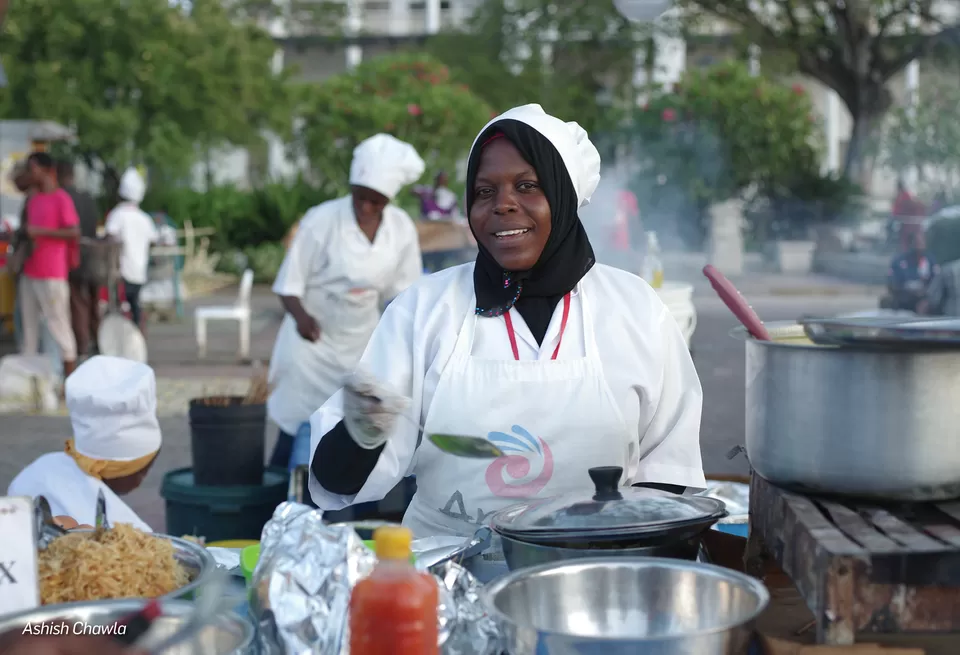
Indian influences spill to other dishes too. At one extreme end of the night market, two cheerful women serve a mean bowl of Urojo. It’s an iconic local streetfood—a unique mish mash, that features bhajias/pakoras, cassava flakes, mingled in a mango-tamarind or coconut curry gravy and topped with more crispy bits. It’s the ultimate blend of Indian, Arab and African flavours, and a must-try. Keep some Dygeine at hand though. All the fried food needs a helping hand to digest. The feel of Stone Town in the morning and then late in the evening is quite different. Just before sunset, at the corner of the night market, boys compete with each other on crazy free dives off the edge of the wall and into the bay.
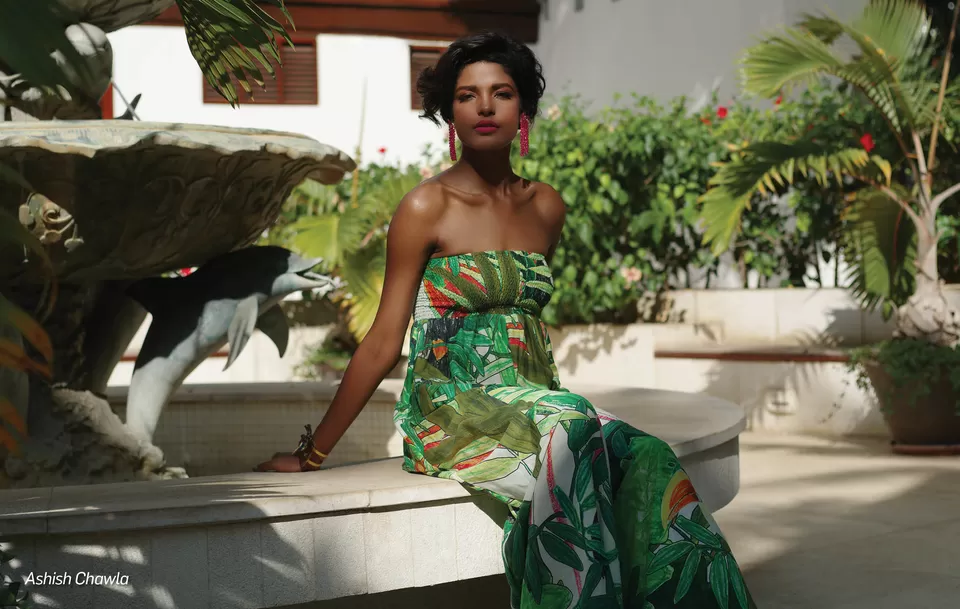
Find your way to one of the rooftop restaurants here and you can dance to taarab music in the evening. In the morning, you’ll find dozens of boats with their sleepy Captains who can take you out to the reef to snorkel among dragon moray eels, colourful starfish and turtles.
While the night market serves up cooked flavours, if you love to explore local produce, a trip to the fresh Darajani market is a must. As we walked through the market, I asked my guide how Zanzibar came to have spice plantations, after all none of the spices we saw in the market were indigenous plants. What he told me was an interesting observation. Trade between Indonesia, Malaysia, India, and East Africa existed since ancient times. Goods and spices borne on wooden dhows sailing the monsoon winds arrived in Zanzibar long before they came here with European merchants.
But in the 16th century, the Portuguese traders began to think of creating an alternate location for sourcing spices—other than Asia. They brought plants, and cleared land for plantations. But they were not successful in establishing anything beyond a military presence in Zanzibar. It was the Omani Arabs who ruled the islands who quickly realised the potential of their dominion—with its hot climate and regular rainfall that made it a perfect location to grow spices. Sultan Seyyid Said, the first Omani sultan to govern Zanzibar encouraged the planting of clove trees on his own plantations, and issued an order to other landowners to plant two clove trees for every coconut tree.
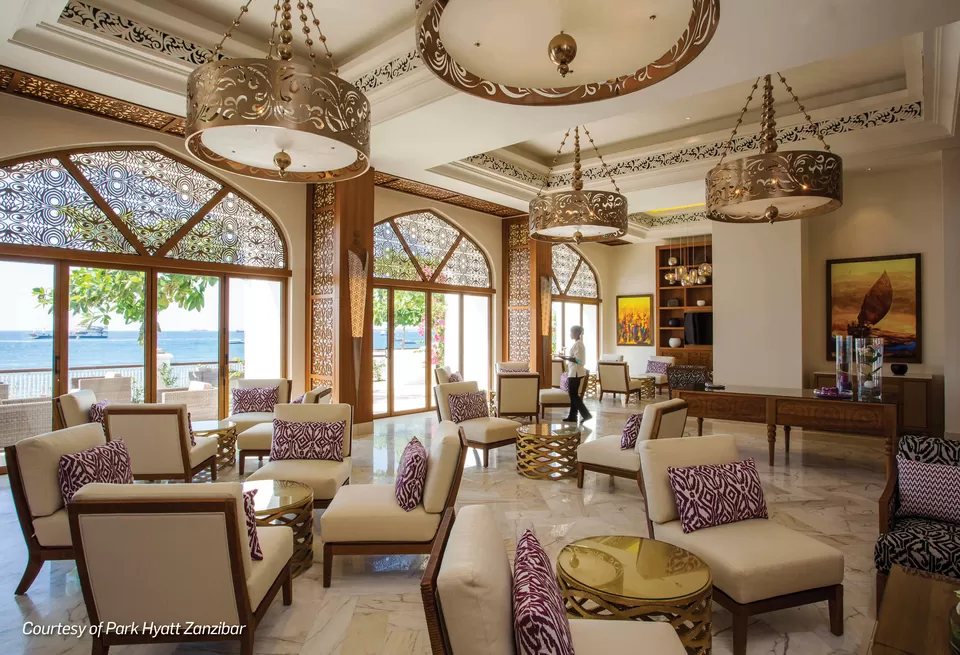
Soon, Zanzibar became a major producer of spices, so when the slave trade was abolished, spices became the islands’ main source of revenue. Its prosperity was visible at The House of Wonders, (called so because it was the very first building in East Africa to have an elevator, electricity and telephone). The House was built by Sultan Barghash bin Said in 1883 and houses the Museum of History & Culture of Zanzibar and the Swahili Coast. The inner courtyard is the unlikely home to a huge Swahili sailing vessel and an old car that belonged Zanzibar’s first president (they had their own president before Zanzibar was united with Tanzania in the 60s (in those days known as Tanganyka).There are many other cool and strange items in the museum, including Dr Livingstone’s rather basic medicine chest. However, a part of the House collapsed recently and hence, the museum is temporarily closed for restoration.
Another Building Now Fully Restored
Another building that has been restored is the Mambo Msiige—now the Park Hyatt Zanzibar. On a quieter end of Shangani Street (the buzzy end of Stone Town), Park Hyatt Zanzibar is an integral part of the UNESCO World Heritage Site. It comprises two buildings; Mambo Msiige, a traditional Zanzibari residence with a beautifully decorated interiors that maximise its position on the waterfront as well as an abundance of natural light, and a more recently built extention that has a gorgeous wooden facade and a little courtyard with a magnificent tree. Owned by a wealthy Omani, Mambo Msiige’s stately entrance features three Omani style arches with intricately carved wooden doors that leading to the hotel’s lobby area—a sunlit courtyard with a fountain in the center.
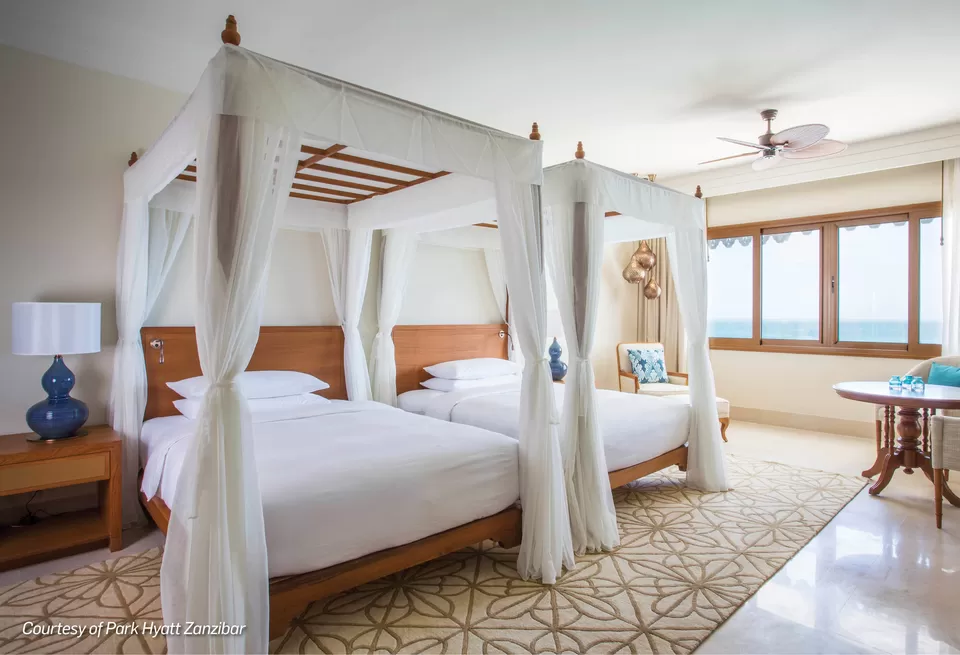
The marble, sunlight, white walls, and high ceiling give any visitor an immediate relief from the heat and humidity outside. As soon as you enter the lobby, you are bound to gasp at the turqouise ocean you glimpse through the doors on the other side of the lobby that lead to the hotels’s waterfront veranda. As I walk through the doorway, I’m amazed that an ocean-front building has stood so solid through the centuries. But I learn that there’s a reason behind that. Mambo Msiige was built using a mix of volcanic coral stone and thousands of eggs, resulting in a more stable and strong structure. It’s uniqueness doesn’t just come from its architecture but also it’s name that means ‘not to be copied or imitated.’
Doreen Mashika- A Local Icon
Zanzibar-based and Tanzania-born designer Doreen Mashika is a true globetrotter. Inspired by the island and continent she calls home, Doreen is constantly infusing her eco-friendly collection with a cool, worldly vibe. An ex-investment banker, having studied and worked in Europe, she is an unusual designer who has established a creative business with a strong commercial foundation. What makes her fashion brand so appealing globally is the way she combines the best of African traditional style with a contemporary approach. Travel is a constant source of inspiration for her. “Wherever I go I see things that inspire me. It could be an interesting print seen in a market stall in London, a beautiful blue African sky, or a piece of art hanging in a New York gallery. I took inspiration for my current collection from a recent Safari trip to Tanzania’s Serengeti National Park. My children love wildlife and skiing, so these two holidays are a must for us every year. And I often find both holidays clear my mind and inspire me.”
Mashika’s aim is to grow her fashion retail business in a way that does not neglect the cultural values of the Maasai, and yet delivers a global product.
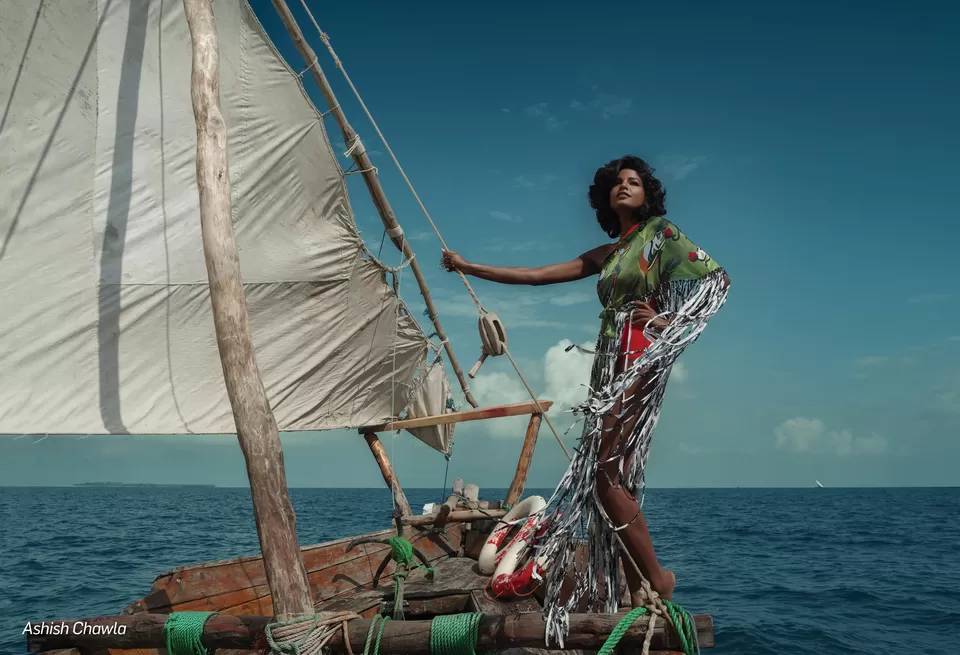
It’s hard to find another building like this in Stone Town. Built in 1850 by the then Sultan’s friend—Sheikh Salim bin Bushir bin Salim al Harthi, a wealthy and prominent Swahili tradesman from a prominent Omani tribe, the mansion was meant to outdo the homes of two other rich Omani residents of Zanzibar. Unfortunately, the Sheikh’s friendship with the Sultan lead him to be executed during the 1859 coup, and his mansion was seized by the new Sultan, Seyyid Majid. Majid gave Mambo Msiige to the Universities Mission of Central Africa to use as a Mission House. Some years later, British consul general Sir John Kirk acquired the mansion. Sir Kirk, a botanist and diplomat had been originally part of Dr Livingstones’ entourage and played a signifi cant role in Zanzibar’s history. During Livingstone’s expedition, Sir Kirk was responsible for collecting plant samples, a job that brought him recognition and lent him expert status in East Africa as a science and medical advisor. In fact, the American journalist Stanley came and took help from Sir Kirk before embarking on his search for Dr Livingstone.
When Livingstone died, his body was kept at Mambo Msiige in preparation to be sent to London. During the years, he learnt to speak both Arabic and Swahili; he was hardy enough to tolerate the heat and disease-prone region, giving him an edge over many other visiting British medical practitioners. Sir Kirk eventually stayed back in Zanzibar as medical counselor at the British Consulate. He even lived at Mambo Msiige. A genteel diplomat, he enjoyed great relations with subsequent Sultans of Zanzibar, even playing a part in the final eradication of slave trade on the island. Prints of his photographs of Mambo Msiige’s architecture and Stone Town’s waterfront decorate some of the hallways at Park Hyatt Zanzibar.
Mambo Msiige underwent major restoration in 1887 on the occasion of Queen Victoria’s Diamond Jubilee. After 1903, the mansion was used as government offices, and post the First World War, it played host to the European Hospital, dedicated to the care of war casualties. It spent most of the years till 1950s as a British government office for various purposes. Even after the revolution of 1964, when Zanzibar was united with Tanganiyka and became part of the Republic of Tanzania, Mambo Msiige remained a building for government offices. Till three years ago when Park Hyatt took over the property and converted it into a beautiful heritage stay. Each suite comes with a private balcony that overlooks the ocean. The Presidential Suite is particularly expansive—combining the most luxurious aspects of Arab design, colonial touches and Zanzibari style.
The cool fragrant spa on its higher floors offers guests treatments with a view of the Indian Ocean and to the sounds of the crashing waves. At night, moonlight floods the suites that look over the beach, and in the morning you wake up to find locals who come to do yoga and calisthenics on the sand. At sunset, the outdoor bar, pool and restaurant areas are buzzing with guests enjoying the golden-hour on the bougainvillea-edged veranda. Fisherman and locals occasionally use the beach front as an area for cultural events, making the same veranda a great place to view them from.
Produced by: Ruchira Bose
Photographs by: Ashish Chawla.
Styling: Dhwani Sharma (Styledrone by Dhwani)
Make-up and hair: Sunil Gautam
Model: Nikita Sahay
Location: Park Hyatt Zanzibar




